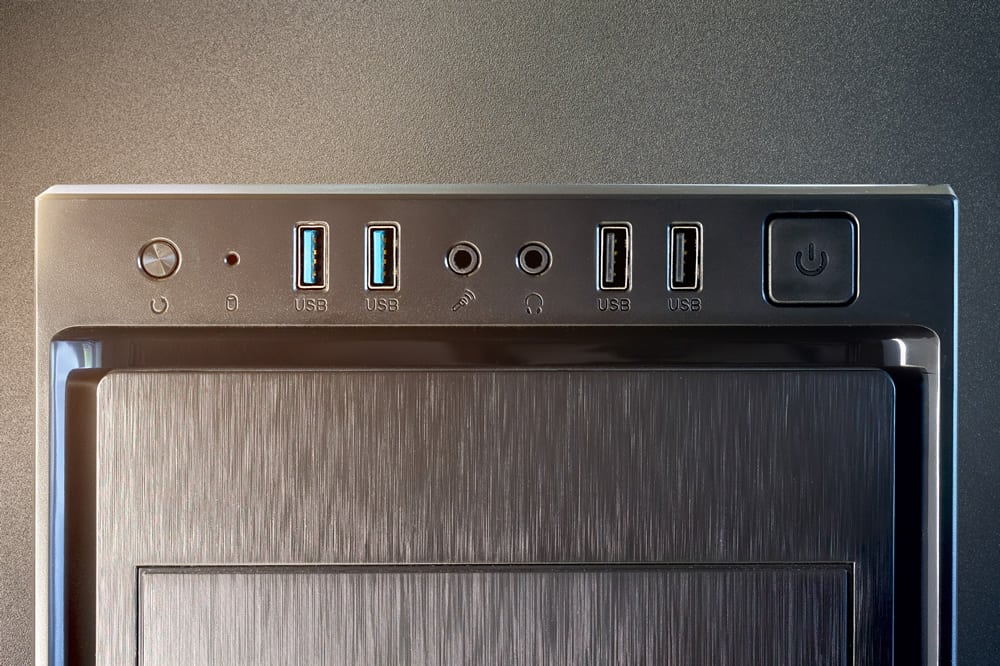What are the Basic Form Factors for Computer Cases?
If you’re planning on buying a PC, or if you’re planning on using or constructing your own, you’re going to want to know a little bit about the machine itself.
Let’s start with the basics. Here are a few basic form factors for computer cases.
The Tower (Full Tower)
The tower (also referred to as a full tower) is ubiquitous, and defined as something that meets the following restrictions. It must be greater than 30 inches tall, and carry between six and ten drive bays.
This type of tower is the most common tower you will find. They are used widely by gamers, programmers, music producers, and anyone who needs to be able to install hardware that can withstand heavy-duty use.
The Middle Tower (Mid Tower)
Even more ubiquitous than the full tower, the middle tower is somewhere between 18 and 20 inches tall, and carries about two or four drive bays.
In addition to its drive bays, the middle tower also usually has space for DVD/CD drives.
If you’ve been to a library, an office, or to the house of a man over the age of 40 and under the age of 60, you’ve probably seen the middle tower design at least once.
If you’re of a certain age, and were born to upper-middle-class parents in the Western world, you probably played World of Warcraft on a computer held in a middle tower case, are currently attending university or recently graduated, and these days are using the Mac laptop your parents bought you when you were about 17.
The middle tower design was super popular, and for a while it was everywhere. For a while, everyone had one, but as the need for more space inside the tower has increased, these have become less popular.
You know what they say … sometimes more is more.
The Miniature Tower (Mini Tower)
As you can probably tell, the editor of this article has chosen to start with the largest case, and move down the list of available popular choices according to the size of the case. What a genius that author is.
The miniature tower design is a little rarer, and usually stands somewhere around 15 inches. If you’re lucky, it’ll carry three drive bays. If you’re unlucky, it might carry only two.
In any case, it’s something of a rare specimen because it’s so limited in terms of size and thus in terms of carrying capacity. They’re also hard to expand.
Small Form Factor Case
Even smaller than the miniature tower case, the small form factor case is small. I mean, really small. It’s primary purpose, in fact, is to make the spatial impact of a PC as minimal as possible.
Basically, if you want a small form factor case, you want a PC that is going to take up as little space as is mechanically possible, and there are, frankly, valid reasons for doing that.
A small form factor case is going to about as big as any of the main holy books: King James Bible, Quran, etc., which is a great size for someone looking to save space.
These are, in general, the most popular cases, but let’s sample another, less common case, if only for the sake of contrast.
DTX Form Factor
These guys are small, and are, according to utilizewindows.com, backward compatible with ATX motherboard form factors, which are some of the most common motherboard form factors out there. If you’re looking to build a PC, this is an excellent choice. It’s vetted, small, affordable, and backward compatible.
Conclusion
Whether you’re building or just purchasing a PC case, it’s important to consider what you’re looking to do with the computer, how much versatility you’d like, and how much you’d like to spend.
The middle tower design, for example, is popular and almost ubiquitous for a reason. It’s cheap, versatile and compatible with a wide variety of setups.
Other similar cases – some of which aren’t on this list – some of which, like the miniature tower case, for example, are difficult to expand, and that’s important to consider.
Even if this is the size case you want now, it might not be what you want a year from now, and not all cases are compatible with all setups, so you’re going to want to maximize the three following considerations in order to maximize value: versatility, flexibility, and cost.

